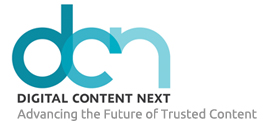While the digital publishing world seems enamored with direct reader revenue lately, here’s a quick reminder that it is difficult to ask people to pay for something that used to be free. And there are a lot of decisions that go into setting up a successful program such as determining the threshold for a free article limit, deciding on a call-to-action, and identifying the right people at the right time.
We wanted to understand the existing subscription model landscape, so we analyzed 1,870 domains in the Parse.ly network. Just under one third (29%) use some type of paywall. The majority of those use some type of membership paywall or a metered/partial paywall. And barely 2% of our entire network deploy a full paywall.
If you’re considering moving from that 71% group into the reader revenue group, you probably have a number of questions, starting with: is this the right move? Other big things to consider include: Who should be seeing your call to action? And what’s the ideal “free article” limit?
Parse.ly’s Head of Audience Development Solutions, Kelsey Arendt, encourages clients to find the answers in data for these three questions when evaluating which paywall method makes the most sense for your site.
What subset of my audience are “super-users”?
Super-users are your most consistent and reliable audience. They appreciate your content and they trust you. That makes the valuable as a target group for a paywall call-to-action and as an exclusive audience for premium advertising partners or for VIP offers.
Selecting the right paywall method hinges on an understanding of audience loyalty distribution. To determine whether you have a sufficiently-monetizable subset of loyal superusers, ask yourself:
- How often do my visitors read?
- How engaged are they each time they visit?
Reader frequency and article engagement help you decide what the cut-off for your call-to-action to subscribe should be, whether it’s a paywall after five free articles or 10.
To illustrate this, we took a look at a sample of aggregated data from the Parse.ly network. Seventy percent of the audience to these sites visit a single website four times or less per month. They also read less than 10 articles per month. Said another way, those readers would not be affected at all if a site implemented a metered-paywall with a limit of 10 free articles a month.
The promising opportunity lies with the other 30%. Take one of the smallest groups, the 3% of the audience who visit a single website nine times per month or more. This loyal group can, and should, be identified if they are the ones who are most likely to convert into subscribers.
Imagine a moment when you walk into your favorite store, the one you go to all the time and where they know you. If someone tells you that they have something special for you, you tend to trust them and consider their offer. Audiences that have made it to that “circle of trust” for your site, might be more receptive to the idea of a paid membership model, thus increasing your chance of converting them.
What content belongs behind a paywall?
Another way of asking this question is: What content resonates with your super-users? To find out, consider the sections or topics your most loyal audience already loves. Figure out what your most loyal audiences pay the most attention to and consider making one of your premium offerings.
Measuring total engaged time reveals the content that resonates the most with readers. Total engaged minutes encompasses both breadth and depth. The team at Slate focuses on engaged time for exactly this reason.
Am I adding value for my readers?
While you have to examine the data behind the potential audience and what they’re most interested in, you should also ask yourself what else you can offer them.
The reason why readers subscribe will always come down to your unique voice and your brand. But as much as people like your content, they also value their time. So, any moment with them must either add value to their life or come at the right time.
There are so many ways to add value to a membership or subscription model. A few that have been explored: exclusive benefits, an ad-free experience, discounted events, direct input into editorial, or VIP access. But don’t limit yourself to what you’ve seen. Maybe your audience would sign up in exchange for a book of coupons to local stores or for an exclusive app download that made them more efficient with their time.
Ask not what your readers can do for you—ask what you can do for your readers.
Paywalls: Not always the perfect solution
At the end of the day, if you want your readers to pay attention to your work, you need to pay attention to their needs and interests. Data can help you understand whether a subscription model might work, and how to get your subscription offer in front of the right people at the right time.
And what if the data shows that paywalls don’t make sense? Paywalls, meters, and memberships are just a few methods of monetization. Even if you can successfully monetize that 3% of super-users, you’ll still need to explore other revenue options.
The other 97% of your audience can still help you generate other types of revenue, like native advertising, merchandise, or advertising. And of course, data can help you find opportunities for those options too.



























